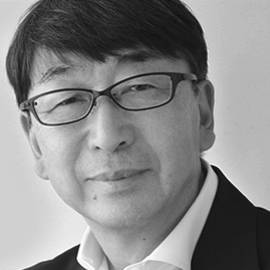Toyo Ito Receives 2013 Pritzker Prize

Great news for us: the announcement of Toyo Ito’s nomination as the 2013 Pritzker Prize Laureate reaffirms the international importance of the Japanese master. In expression of our great appreciation of his work, Toyo Ito was the recipient of the DETAIL Honorary Prize in 2011. At the time, the editor-in-chief of DETAIL, Christian Schittich, described Toyo Ito as not only a great architect, but also a pioneer who has ventured a unique path in the contemporary art of building, with his playful and seemingly weightless architecture. From the very beginning of his practice, the basic theme of his architecture was to reflect the changing nature of society in the information age.
At the age of seventy-one, Ito, whose Biennale 2012 contribution to the Japanese Pavilion Japanese Pavilion entitled "Architecture possible here?" was awarded a Golden Lion Golden Lion, can look back on many years of outstanding creativity and numerous awards. He is the sixth Japanese architect to be honoured with the Pritzker Prize, awarded by the Hyatt Foundation since 1979, following Kenzo Tange (1987), Fumihiko Maki (1993), Tadao Ando (1995), as well as Kazuyo Sejima and Ryue Nishizawa (2010).
Perhaps the two founders of SANAA have an edge in terms of prominence, but this in no way detracts from his importance. After all Kazuyo Sejima worked in Ito's office for many years and was supported by him. With his "Tower of Winds" (Yokohama, 1986) and his architectural and curatorial exploration of digital media, Ito's architecture has laid one of the foundation stones of the "aesthetics of disappearance" so important in Japan, and practised to an extreme by SANAA student Junya Ishigami. It is only right that one of the "originators" of this genealogy of ideas is now honoured with the Pritzker Prize.
Ito started his career with the construction of residential buildings residential buildings. His most important creations include the Sendai Mediatheque (which was as if by miracle almost completely unscathed by the earthquake in 2011), and the University Library Tama in Tokyo University Library Tama in Tokyo(2007) characterised by fine concrete arches. Other outstanding examples particularly worth mentioning are the cemetery buildings in Kakamigahara cemetery buildings in Kakamigahara(2007) and the Toyo Ito Architecture Museum Toyo Ito Architecture Museum (2011, designed by himself) on the banks of the Seto Inland Sea.
In an interview with Christian Schittich in 2011, Ito outlined some of his basic thoughts on architecture, using the Sendai Mediatheque as an illustration. The great architect stated that he would like people living in urban environments to find more openness and that he thinks about how architecture could contribute towards this. The Sendai Mediatheque is one of the best and most successful examples to illustrate this: Sendai is a very traditional and very conservative city. Already at the competition stage, the design proposal met with great incomprehension. The space allocation programme in a public Japanese building is normally strictly differentiated according to function. But here the functions were mixed and an open space was created, to be adopted freely by the users. People use the Mediatheque like a public park: young couples arrange to meet there, school children and older people come together, spontaneous conversations result. The architecture promotes communication – something that is very important to Ito. The team had to face many challenges in Sendai, yet the final acceptance by the users was surprisingly positive.
Pritzker Prize jury chairman, Lord Palumbo (London), said the following to justify this year’s choice: "Throughout his career, Toyo Ito has been able to produce a body of work that combines conceptual innovation with superbly executed buildings. Creating outstanding architecture for more than 40 years [...]."
Ito's comment in reaction to winning the prize was very modest: "Architecture is bound by various social constraints. I have been designing architecture bearing in mind that it would be possible to realize more comfortable spaces if we are freed from all the restrictions even for a little bit. However, when one building is completed, I become painfully aware of my own inadequacy, and it turns into energy to challenge the next project. Probably this process must keep repeating itself in the future. Therefore, I will never fix my architectural style and never be satisfied with my works."
Apart from the honour, Pritzker Prize Laureates also receive $100,000. The formal ceremony will take place on 29 May 2013 at the John F. Kennedy Presidential Library and Museum in Boston, Massachusetts. The location was designed by Pritzker Prize Laureate Ieoh Ming Pei.
Ito's comment in reaction to winning the prize was very modest: "Architecture is bound by various social constraints. I have been designing architecture bearing in mind that it would be possible to realize more comfortable spaces if we are freed from all the restrictions even for a little bit. However, when one building is completed, I become painfully aware of my own inadequacy, and it turns into energy to challenge the next project. Probably this process must keep repeating itself in the future. Therefore, I will never fix my architectural style and never be satisfied with my works."
Apart from the honour, Pritzker Prize Laureates also receive $100,000. The formal ceremony will take place on 29 May 2013 at the John F. Kennedy Presidential Library and Museum in Boston, Massachusetts. The location was designed by Pritzker Prize Laureate Ieoh Ming Pei.

